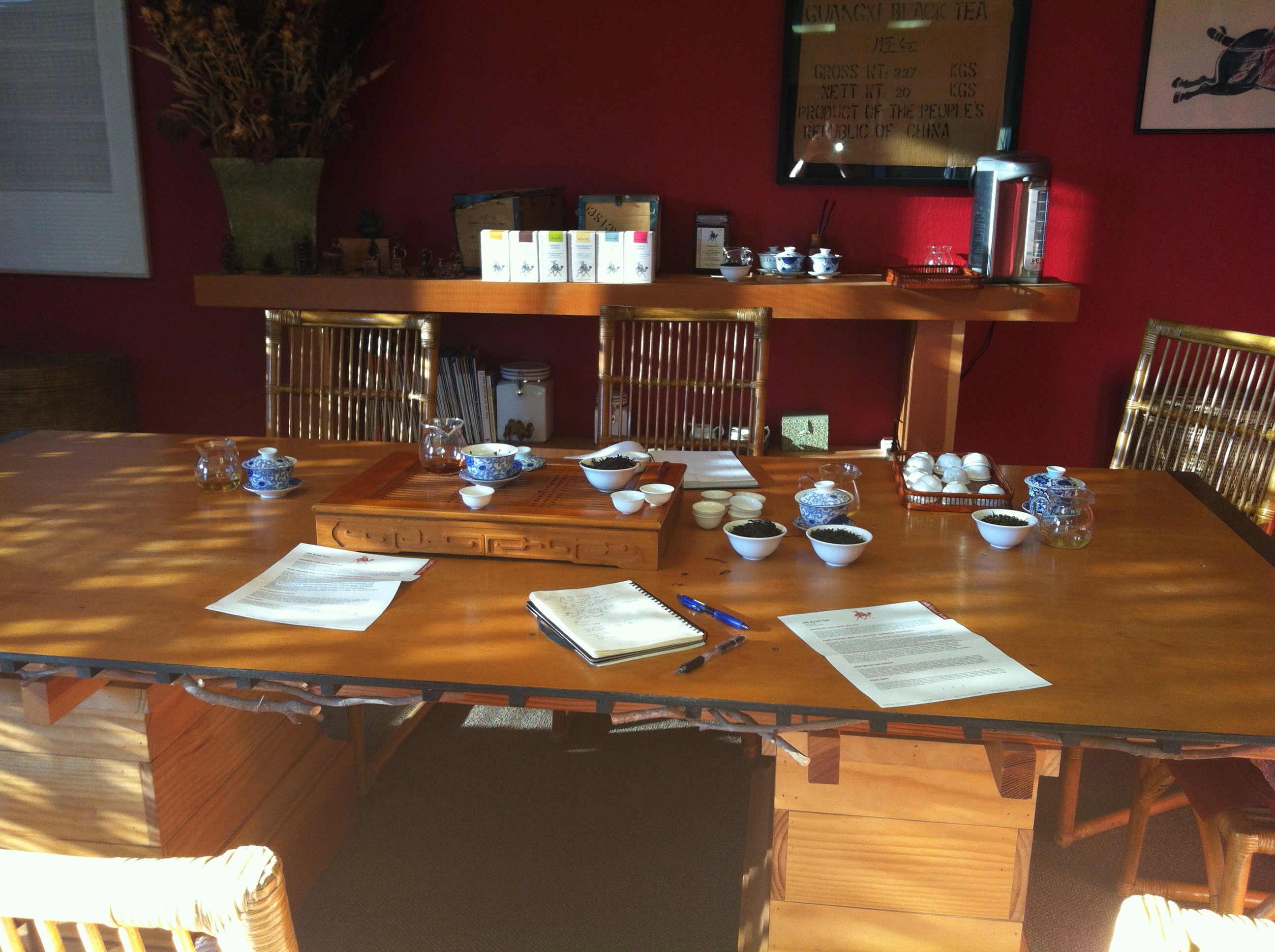The Green Tea Belt of China
France isn’t the only place with terroir chops. China overflows with tea regions specific to green, black, white and yellow. (Not a mistake: yellow tea was actually a tribute tea to the emperor.)
Most of the green tea from China comes from just five provinces near the East China Sea and separated by the Yangtze River, the longest river in Asia. Each of these five provinces produce distinctive teas. While the general processing is the same, the shape of the finished leaf and the technique differs according to the type of tea.
 Zhejiang province, just south of the Yangstze River is where the famous Dragonwell, or Long Ching, tea originated. The dry leaf is bright green;
Zhejiang province, just south of the Yangstze River is where the famous Dragonwell, or Long Ching, tea originated. The dry leaf is bright green; the wet leaves take on a soft green patina.The tea has flat, blade leaves, the result of tea-makers pressing the leaves flat against the sides of the wok after the leaves are withered. The finest Dragonwell comes from leaves picked ten days before the Quingming Festival, usually around April 5th. Only the tips are hand-plucked.Later-plucked teas are less pricy and as you can imagine, supply exceeds demand. So some dealers bring in tea from other provinces and process it at Zhejiang using Dragonwell methods; others mix real dragonwell with low grade teas and others use the label but admit it comes elsewhere.
the wet leaves take on a soft green patina.The tea has flat, blade leaves, the result of tea-makers pressing the leaves flat against the sides of the wok after the leaves are withered. The finest Dragonwell comes from leaves picked ten days before the Quingming Festival, usually around April 5th. Only the tips are hand-plucked.Later-plucked teas are less pricy and as you can imagine, supply exceeds demand. So some dealers bring in tea from other provinces and process it at Zhejiang using Dragonwell methods; others mix real dragonwell with low grade teas and others use the label but admit it comes elsewhere.
When you brew dragonwell, use a lower temperature than black or oolong. 170 F is fine. This is not a tea to gulp down, but you don’t have to make a big deal of it either. It’s delicate, but sturdy.


